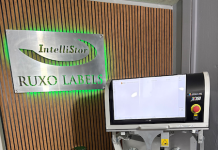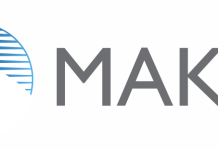The print industry continues to evolve — a notion confirmed in the latest market study from Madison Advisors (January 2021). Madison Advisors’ research focused on post-composition solutions for volume print production environments. Why is post-composition important for the future success of volume print production industries?
Madison Advisors puts it into context in their press release about the new study: ‘Even if some of the functionality of a post-composition solution overlaps that of the core document composition solution(s), the cost benefit of considering post-composition to address rapidly changing customer expectations more easily is worthy of serious consideration,’ said Keith Woedy, Vice President of Research and Practice Lead, Madison Advisors. ‘We believe that, to stay competitive, companies need to take a hard look at including post-composition into the workflow to support the ability to deliver highly personalised, efficient and cost-effective communications.’
This perspective from Madison Advisors dovetails positively into Solimar Systems’ experiences in the volume print production industries, as cited by Jonathan Malone-McGrew, Senior Director of Engagement, Solimar Systems. It also rings true with their 30-member Customer Advisory Council made up of in-plants, direct mail printers and some of the largest Print Service Providers (PSPs). As Woedy mentioned, the need to deliver what print buyers and customers require is key to the value of post-composition in 2021.
Printers are on a mission to find better ways to win more business and operate more efficiently. Their experience from last year is driving a renewed energy across the printing industry as they embrace the continued variability of print markets and its impact on how print production environments receive, produce and deliver work. Solimar sees five effective ways that post-composition will help print production workflows handle more business, more efficiently. The ultimate result is more business success, as McGrew explains below.
1. Handle a larger number of smaller quantity orders
Around the world, printers of all types talk to us about the challenge of more orders coming in but for lower quantities per order. Post-composition print workflow solutions are critical here. Optimising print orders as they come in, commingling or batching them with like print jobs and automating the process with visible, trackable and reportable processes or workflows is crucial. Customers tell us this capability can save them a great deal of money in printing and process costs annually while opening the door to new revenue opportunities.
2. Fulfil the requirement for personalisation
The idea of personalisation is not new, but the need for it continues to grow. Personalisation is not just about applying a name to a printed product. Regionalisation is a key component to personalisation and delivers unique experiences for recipients in different geographies. Using Variable Data Printing (VDP) techniques, printers can offer data-driven content that makes each printed piece more relevant and valuable to the recipient.
That relevance can be driven by the user’s own preferences revealed by past purchasing behaviours or interests. Given the long timeframes typically associated with implementing composition workflows, personalisation is often added in a more timely manner with a post-composition solution. By adding these crucial tools in print environments, organisations have the opportunity to offer customers extended services and grow their business overall.
3. Meet the demands for fast production and delivery
Rapidly changing expectations are pressuring printers to become more agile in meeting faster turnaround times. To do this, the critical processes within a volume print production environment need to be efficient. Automation is vital, leaving manual tasks for only those orders that have special needs or exceptions. Print Service Provider (PSP) clients of ours tell us that our post-composition solutions can dramatically reduce production overhead, time-to-complete and manual labour across all types of jobs. At the same time, these solutions tend to improve accuracy and create new revenue opportunities.
4. Enable competitive pricing
Competitive pricing is based on both business and market factors. While businesses can build a competitive pricing strategy by adjusting profit margins or by bundling unique offers, a more typically sustainable approach is reducing structural overhead. Post-composition can provide the critical path to giving high-volume print shops the ability to reduce their operational expenses. Through hands-off, automated and templatised processes, organisations can streamline and drive costs down. The benefit is flexibility in maintaining profit margins while offering more competitive pricing to customers.
5. Leverage all destination devices and channels
The fifth consideration for how post-composition easily drives success for volume PSPs is the ability to load balance or redirect work to the devices or channels available. Simply put, some operational decisions are best done after composition. With the right workflows, PSPs can drive significant benefit by digitally diverting jobs for e-delivery or by batching and segmenting content to optimise both printer and inserter utilisation. In addition, such post-composition workflows tend to leverage postal discounts. No matter the need, post-composition print workflow solutions can help PSPs leverage the equipment they have and optimise the work they do.
Solimar’s advice to influencers within in-plant or print service provider businesses is to take a closer look at your current processes. Make sure you walk your workflow from order or job receipt to the delivery of the finished product. If you see bottlenecks or slowdowns in the five areas mentioned above, you are on the right path to discovering a plan to improve your print business through post-composition software solutions.
SOLIMAR SYSTEMS
https://www.solimarsystems.com





















